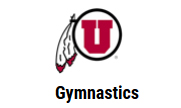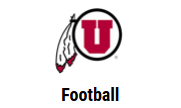Knee
- Preparing for your Clinic Visit
- Preparing for your Surgery Day
- Procedures
- What to Expect After Surgery
- Follow Up Appointments
- Support Numbers
Click on the topics below to find out more from the orthopaedic connection website
Normal Anatomy of the Knee Joint
The knee is made up of four bones. The femur or thighbone is the bone connecting the hip to the knee. The tibia or shinbone connects the knee to the ankle.
For more information about Normal Anatomy of the Knee Joint, click on below tabs.
Knee fracture
A fracture is a condition in which there is break in the continuity of the bone. In younger individuals these fractures are caused from high energy injuries,
For more information about Knee fracture, click on below tabs.
Anterior Cruciate Ligament Tear
The anterior cruciate ligament, or ACL, is one of the major ligaments of the knee that is located in the middle of the knee and runs from the femur (thigh bone) to the tibia (shin bone).
For more information about Anterior Cruciate Ligament Tear, click on below tabs.
Cartilage Injuries
Articular cartilage is a complex avascular (no blood supply) tissue which consists of cells called chondrocytes suspended in a collagenous matrix. It appears as a smooth, shiny, white tissue at the ends of the bones which come in contact with each other to form a joint.
For more information about Cartilage Injuries, click on below tabs.
Meniscus Tear
Meniscus tear is the commonest knee injury in athletes, especially those involved in contact sports. A suddenly bend or twist in your knee cause the meniscus to tear. This is a traumatic meniscus tear
For more information about Meniscus Tear, click on below tabs.
Posterior Cruciate Ligament Injuries
Posterior cruciate ligament (PCL), one of four major ligaments of the knee is situated at the back of the knee. It connects the thighbone (femur) to the shinbone (tibia).
For more information about Posterior Cruciate Ligament Injuries , click on below tabs.
Medial Collateral Ligament Tear
The medial collateral ligament (MCL) is the ligament that is located on the inner part of the knee joint. It runs from the femur (thighbone) to the top of the tibia (shinbone) and helps in stabilizing the knee.
For more information about Medial Collateral Ligament Tear , click on below tabs.
LCL Injury
Lateral collateral ligament (LCL) is a thin set of tissues present on the outer side of the knee, connecting the thighbone (femur) to the fibula (side bone of lower leg).
For more information about LCL Injury, click on below tabs.
Patellofemoral Instability
The knee can be divided into three compartments: patellofemoral, medial and lateral compartment. The patellofemoral compartment is the compartment in the front of the knee between the knee cap and thigh bone.
For more information about Patellofemoral Instability, click on below tabs.
Arthroscopy of the Knee Joint
Knee Arthroscopy is a common surgical procedure performed using an arthroscope, a viewing instrument, to look into the knee joint to diagnose or treat a knee problem.
For more information about Arthroscopy of the Knee Joint, click on below tabs.
Total Knee Replacement (TKR)
Total knee replacement, also called total knee arthroplasty, is a surgical procedure in which the worn out or damaged surfaces of the knee joint are removed and replaced with artificial parts.
For more information about Total Knee Replacement (TKR), click on below tabs.
Anterior Cruciate Ligament ACL Reconstruction
The anterior cruciate ligament is one of the major stabilizing ligaments in the knee. It is a strong rope like structure located in the center of the knee running from the femur to the tibia
For more information about Anterior Cruciate Ligament ACL Reconstruction, click on below tabs.
ACL Reconstruction Hamstring method
Anterior cruciate ligament (ACL) reconstruction hamstring method is a surgical procedure that replaces the injured ACL with a hamstring tendon.
For more information about ACL Reconstruction Hamstring method, click on below tabs.
ACL Reconstruction Patellar Tendon
Anterior cruciate ligament (ACL) reconstruction patellar tendon is a surgical procedure that replaces the injured ACL with a patellar tendon.
For more information about ACL Reconstruction Patellar Tendon, click on below tabs.
Unicondylar Knee Replacement
Unicompartmental knee replacement is a minimally invasive surgery in which only the damaged compartment of the knee is replaced with an implant.
For more information about Uni condylar Knee Replacement, click on below tabs.
Revision Knee Replacement
Revision knee replacement surgery involves replacing part or all of your previous knee prosthesis with a new prosthesis. Although total knee replacement surgery is successful,
For more information about Revision Knee Replacement, click on below tabs.
Osteochondritis Dissecans
Osteochondritis dissecans (OCD or OD) is a joint disorder in which cracks form in the articular cartilage and the underlying subchondral bone. OCD usually causes pain and swelling of the affected joint which catches and locks during movement.
For more information about Osteochondritis Dissecans , click on below tabs.
Patellar Dislocation
Patella (knee cap) is a protective bone attached to the quadriceps muscles of the thigh by quadriceps tendon. Patella attaches with the femur bone and forms a patellofemoral joint.
For more information about Patellar Dislocation , click on below tabs.
Tibial Spine Repair
A tibial spine fracture is an avulsion (tear away) of the tibial eminence (an extension on the bone for attachment of muscles) which most commonly involves the anterior cruciate ligament (ACL) insertion site.
For more information about Tibial Spine Repair, click on below tabs.
Hemi-Epiphysiodesis for Genu Valgum
Knock knees is a condition in which the legs curve inward at the knees. When a child stands, the knees appear to bend toward each other and the ankles are spread apart.
Interactive Videos
Click on the topics below to find out more from the orthopaedic connection website of American Academy of Orthopaedic Surgeons.
- ACL Injury: Should it be fixed?
- Activities After a Knee Replacement
- Additional Resources on the Knee
- Adolescent Anterior Knee Pain
- Arthritis of the Knee
- Care of the Aging Knee: Baby Boomers May Need Lifestyle Changes
- Cemented and Cementless Knee Replacement
- Deep Vein Thrombosis
- Frequently Asked Questions about Osteoarthritis of the Knee
- Goosefoot (Pes Anserine) Bursitis of the Knee
- Knee Arthroscopy
- Knee Arthroscopy Exercise Guide
- Knee Implants
- Knee Replacement Exercise Guide
- Kneecap (Prepatellar) Bursitis
- Meniscal Tear
- Meniscal Transplants
- Minimally Invasive Total Knee Replacement
- Nonsurgical Treatment Options for Osteoarthritis of the Knee
- Orthopaedists Research Female Knee Problems
- Osgood-Schlatter Disease (Knee Pain)
- Osteonecrosis of the Knee
- Posterior Cruciate Ligament (PCL) Tear
- Rotating Platform/Mobile-bearing Knees
- Runner’s Knee (Patellofemoral Pain)
- Surgical Treatment of Osteoarthritis of the Knee
- The Knee
- Total Knee Replacement
- Unstable Kneecap
- Viscosupplementation Treatment for Arthritis



















